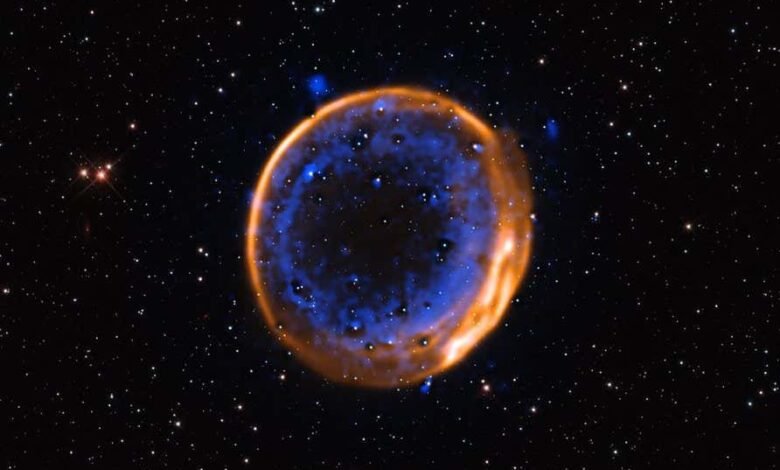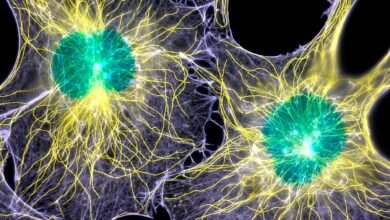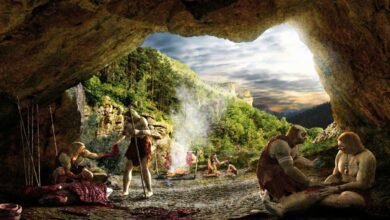Stunning image of a supernova reveals a dead star that exploded twice


Two concentric rings appear around the supernova remnant SNR 0509-67.5, indicating that it exploded twice
ESO/P. Das et al. Background stars (Hubble): K. Noll et al.
A white dwarf star around 160,000 light years away appears to have exploded twice – the first evidence astronomers have seen that such supernovae involve a double detonation.
White dwarf stars are dead stars that were once like our sun, but have exhausted their nuclear fuel, leaving an Earth-sized core. If a white dwarf draws in material from a nearby star, its mass can reach a point where it reignites and explodes as a type Ia supernova.
The mechanism behind a white dwarf becoming a supernova hasn’t been well understood. Some astronomers have hypothesised that there may need to be two explosions, but until now, there has been no evidence of this.
Priyam Das at the University of New South Wales in Canberra, Australia, and his colleagues studied spectra collected by the European Southern Observatory’s Very Large Telescope in Chile of a supernova remnant in the Large Magellanic Cloud. Images of the remnant, SNR 0509-67.5, clearly show two concentric shells that exploded outwards.
Das says the white dwarf must have somehow collected helium onto its surface – either from another nearby helium white dwarf or a helium-rich massive star – and, once enough had accumulated, it exploded.
“We get a very initial helium detonation and, within tens of seconds, we get the second detonation, so it happens all in the blink of an eye,” says Das.
The material from the first explosion was initially travelling at 25,000 kilometres per second, so, even though the second explosion happened only tens of seconds later, the two blasts are still separated by huge distances.
It is thought that the light from the explosion would have reached our planet sometime between 310 and 350 years ago. It would have been one of the brightest objects in the southern hemisphere night sky, but there are no records that any human saw it at the time – perhaps because it was hidden behind our sun.
Topics:
Source link




